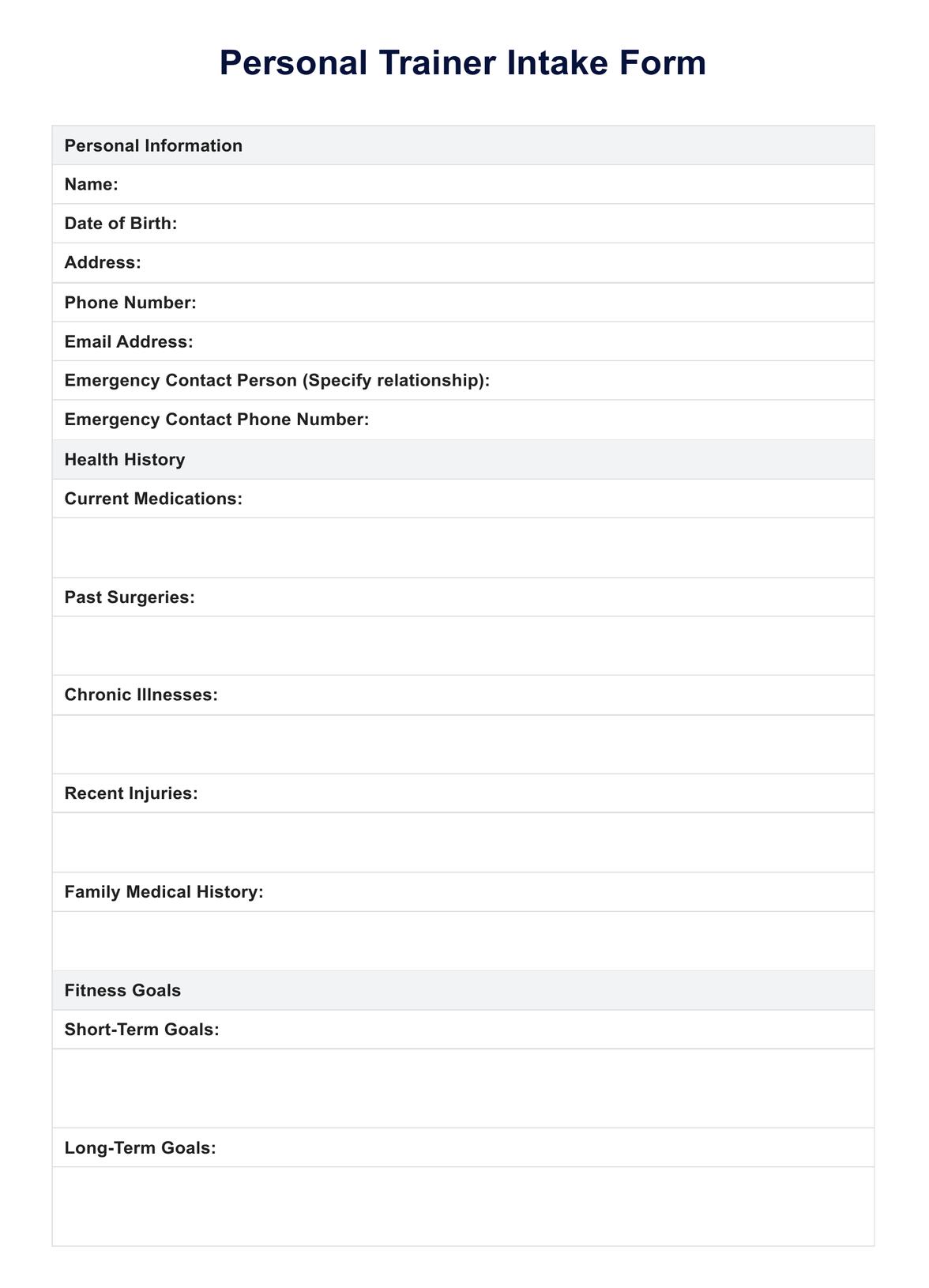Personal trainers should collect a signed informed consent form, PAR Q (Physical Activity Readiness Questionnaire), medical clearance (if applicable), and a goals assessment document.

Personal Trainer Intake Form
Discover how to create an effective Personal Trainer Intake Form with our comprehensive guide & free PDF example. Streamline your fitness assessments now.
Personal Trainer Intake Form Template
Commonly asked questions
Aside from an intake form, personal trainers should use health and fitness assessment forms, progress tracking sheets, nutrition logs, and a client agreement or contract.
To create and edit a personal intake form on Carepatron, navigate to the templates section, select 'Create New Template,' customize your form using the intuitive editor, and save changes. Open your existing form from the templates for editing, make the necessary adjustments, and save.
EHR and practice management software
Get started for free
*No credit card required
Free
$0/usd
Unlimited clients
Telehealth
1GB of storage
Client portal text
Automated billing and online payments











